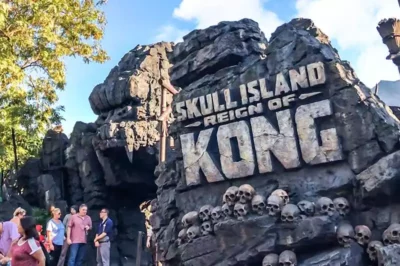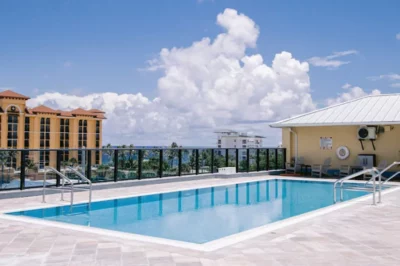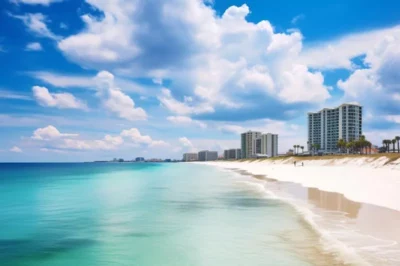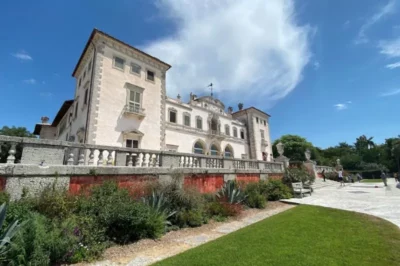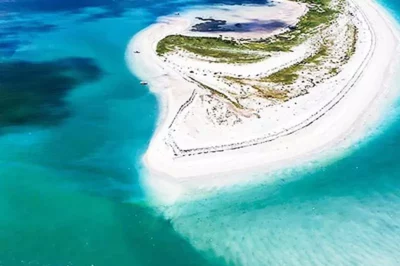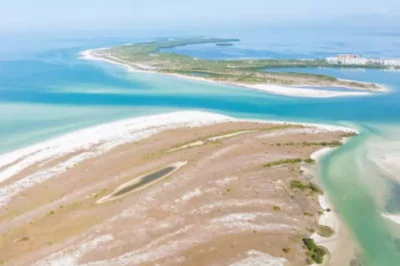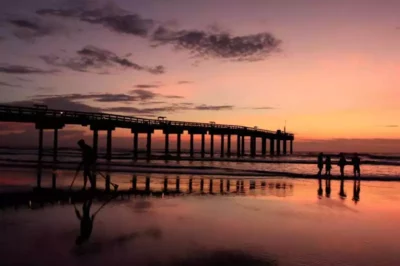- Biscayne Bay National Park History
- What to Do in Biscayne National Park
- Biscayne National Park Snorkeling and Scuba Diving
- Kayaking Biscayne Bay National Park
- Biscayne National Park Lighthouse (Fowey Rocks)
- Wildlife in Biscayne National Park
- 8 Tips for Visiting Biscayne National Park
- Where to Stay at Biscayne National Park?
- Camping near Biscayne Bay National Park
- Elliott Key Campground
- Boca Chita Key Campground
- Adams Key Campground
- Boca Chita Lighthouse
- The Best Key Biscayne Beaches
- How to Get to Biscayne National Park?
- Guided Tours and Boat Rentals
- FAQs
- Can you swim at Biscayne Bay National Park?
- When is the best time to visit Biscayne Bay?
- What should I bring with me when I visit Biscayne Bay?
- Biscayne National Park entrance fee
- What about Everglades National Park?
Biscayne National Park: Perfect Snorkeling in Miami Key
An enthralling, often overlooked treasure nestled within the verdant expanse of South Florida, Biscayne Bay National Park captivates the hearts and minds of its visitors through an enchanting fusion of awe-inspiring panoramas, pulsating ecosystems, and a rich tapestry of cultural heritage.
As the sprawling, watery realm of the United States’ most expansive marine park unfurls across an impressive 172,000 acres, it reveals an aquatic wonderland replete with pristine, shimmering waters, dense mangrove forests that whisper secrets, and the kaleidoscopic marvels of teeming coral reefs.
Nature aficionados, thrill-seekers, and connoisseurs of history alike find themselves irresistibly drawn to the myriad opportunities for exploration and reverence offered by this singularly extraordinary marine sanctuary.
Biscayne Bay National Park History
Biscayne Bay National Park has a rich history that spans thousands of years. It wasn’t until the 1800s that this hidden gem began to capture the interest of potential settlers. Back in those days, pirates often lurked around the bay, taking advantage of its secluded islands and shallow waters as perfect hideouts.
Fast forward to 1898, when the Florida East Coast Railroad extended its reach to Biscayne Bay, sparking a period of rapid growth in the area. This development led to the establishment of Coconut Grove, one of Miami’s oldest neighborhoods.
In the 1950s, a movement to protect the unique beauty of Biscayne Bay emerged, thanks to the tireless efforts of activists like Lloyd Miller and Lancelot Jones. Their dedication paid off when, in 1980, President Jimmy Carter officially redesignated the area.
Today, the park stands as a symbol of the significance and value of preserving our natural and cultural heritage. Visitors have the chance to explore its varied ecosystems, delve into its intriguing past, and appreciate the hard work that has gone into safeguarding this exceptional environment for generations to come.
What to Do in Biscayne National Park
The park offers a variety of water activities for visitors to enjoy. Visitors can explore the coral reefs, go canoeing with a park ranger, hiking or snorkeling trips. The ocean water here is so clean and clear that it tops the list of the bluest waters in Florida.

Biscayne National Park Snorkeling and Scuba Diving
Enveloped by the tranquil embrace of the azure waves, one may find themselves indulging in the exhilarating pursuits of snorkeling and scuba diving—an exhilarating endeavor, indeed, accessible to individuals from all walks of life. Possessing a vessel of your own? Ah, a plethora of aquatic realms lay before you, ripe for exploration and teeming with life beneath the shimmering surface.

Stretching far and wide, the expansive coastline of the park unfurls before you, dotted with myriad isles, their secrets awaiting discovery. Venture deeper, and submerged vestiges of a bygone era—shipwrecks, no less—beckon to those with a thirst for adventure, ripe for exploration via the immersive world of scuba diving.
In BNP Institute, a prestigious organization revered for its meticulously curated excursions into the heart of the region. Among their diverse offerings, one may find themselves immersed in the enigmatic world of shipwrecks, snorkeling amidst the remnants of nautical history within the National Park’s borders. Alternatively, embark upon guided sojourns by boat, or partake in paddle tours under the watchful gaze of knowledgeable guides.
Diving aficionados flock to the park, enticed by an abundant selection of dive sites, each with its unique allure. Snorkeling expeditions, too, enjoy considerable popularity within the boundaries of the park.
Diligently documented, the enigmatic wrecks that reside in the park’s depths have been adorned with strategically placed buoys, guiding intrepid explorers to uncover the mysteries that lie beneath the waves.
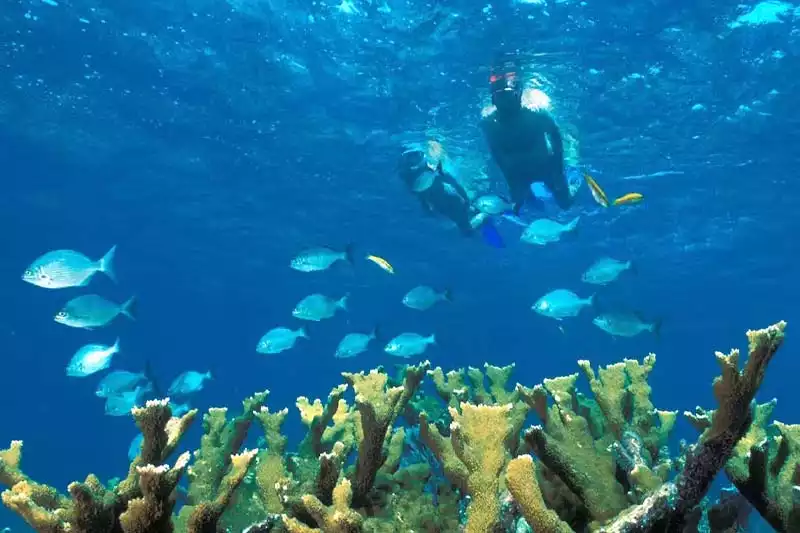
Kayaking Biscayne Bay National Park
There are also companies offering canoe rentals and tours in the national park. Canoeing and kayaking is a best way to see the park’s mangrove forests and birdlife. Paddle boards tours allow you to explore Jones Lagoon and see baby sharks and other sea creatures.
Biscayne National Park Lighthouse (Fowey Rocks)
Further north of the park is the Fower Rocks Lighthouse. You can only go here by boat. Many snorkeling tours are organized in the area where the lighthouse is located. This historic lighthouse, which is 40 meters high above the sea, is still active.
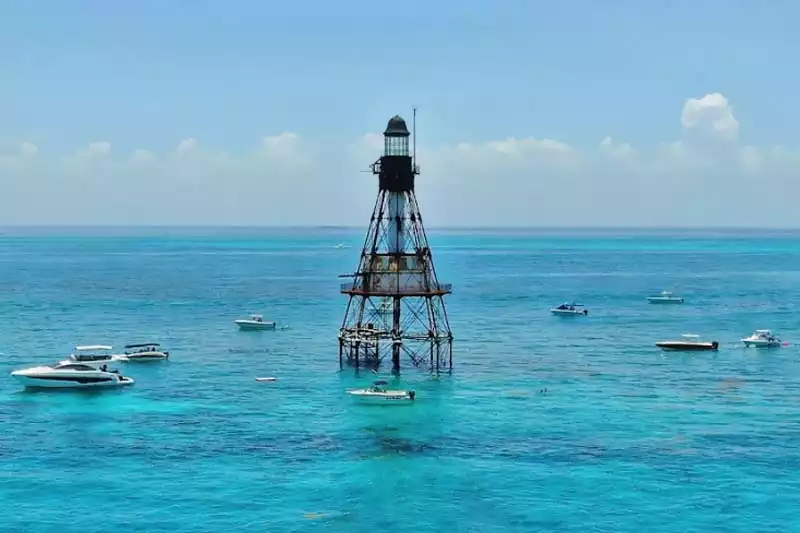
Wildlife in Biscayne National Park
The park is home to incredible wildlife. The park’s subtropical waters are full of fish, turtles, dolphins and manatees. On land you can find iguanas, snakes, crocodiles and various species of birds.
Visitors to the park often come for the chance to see these amazing animals in their natural habitat. There are various ways to see the wildlife in the park. You can go on a boat tour, snorkel or dive, or walk along the trails.
8 Tips for Visiting Biscayne National Park
You can also tent camp in Biscayne Park or swim at its beaches. There are some important things to consider when visiting the park. Pay attention to these items for a smoother trip.
- If you’re planning a trip to the park, it’s crucial to keep in mind that tides and currents can get quite strong in certain spots. Make sure to take necessary precautions!
- Since the sun can be quite relentless in this region, don’t forget to slather on some sunscreen and sport a hat to protect yourself.
- There aren’t any eateries or food stalls within the park boundaries, so pack enough water and munchies to keep you going throughout your visit.
- As you explore the different barrier islands within the park, you should also make sure to stay on designated trails to protect sensitive ecosystems.
- You should plan ahead as this is not a place you can get to by car and is only accessible by boat.
- If you want to fish in Biscayne National Park and even in many parts of Florida, you will need a saltwater fishing license.
- Take your fly and insect repellent with you to the campgrounds. Do not forget to wear long sleeves.
- It can be very crowded during the sea season, especially on weekends.
- If you’re visiting during hurricane season (June 1-November 30), be sure to check conditions before you go and be prepared for possible closures. Hurricane Andrew hit in 1992 and damage was severe in some areas of the park. The main road through the park, Spite Highway, was closed for several years after Hurricane Andrew. During dry season (December-May), weather conditions are typically ideal for outdoor activities.
Where to Stay at Biscayne National Park?
We don’t have many options, but we still have options where we can spend unforgettable hours.
Camping near Biscayne Bay National Park
There are no accommodation options such as hotels or motels within the borders of the park. The closest place to stay in such establishments is Miami.
There are no RV camping near the park, but there are two campgrounds in Biscayne National Park for those who want to pitch a tent. These are also places where you can have a daily picnic.
Elliott Key Campground
Elliott Key Campground is one of two campgrounds. It is located on Elliott Key, the largest of the Florida Keys, and offers spectacular views of the Atlantic Ocean. There are restrooms, sinks and cold water showers. There are also picnic tables and grills. However, be cautious about drinking water and bring your own.
Boca Chita Key Campground
An oasis of tranquility under the dazzling Florida sun, Boca Chita Key Campground is a spectacular campground within the boundaries of the park and reigns as the park’s most famous campground. It is also often favored for its proximity to Boca Chita Key beach.

When you visit this picturesque paradise, where the lush, manicured grounds meet the soft, earthy texture of the grass beneath your feet, enjoy the camaraderie of fellow adventurers as you gather around communal picnic tables or fan the flames of a smoldering grill. Though sparse, there are sufficient amenities for an authentic camping experience.
A functional toilet is readily available for use, but the lack of a shower and sink suggests the need for self-sufficiency. Don’t forget to bring your own drinking water, a precious commodity on this secluded island.


As you make your way to these charming campsites, know that you can effortlessly pay via the recreation.gov mobile app by scanning the QR code on the island’s kiosks. Unfortunately, a warning for avid travelers: reservations for these sought-after campsites are unfortunately not accepted, so it’s best to arrive early and secure your spot amidst the mesmerizing splendor of Elliot Key.
Adams Key Campground
This place is another area, but there is no tent camping here. It is only open for day use. You can stay here until sunset and enjoy yourself.
Boca Chita Lighthouse
The Boca Chita Lighthouse, an iconic landmark is a historic 65-foot tall structure situated on the picturesque Boca Chita Key. Though not an operational lighthouse, this elegant white tower with a black lantern room adds a touch of charm to the island’s landscape and serves as a popular backdrop for photos.

Built in the 1930s by Mark C. Honeywell, the founder of Honeywell Corporation, the lighthouse was a part of his private retreat on the island. Honeywell’s vision was to create a lavish vacation destination for his family and friends, and the lighthouse was designed as a decorative piece to enhance the beauty of the island.
Over time, the ownership of Boca Chita Key changed hands, and eventually, the island became a part of this park. Today, the Boca Chita Lighthouse remains a favorite attraction for visitors who come to explore the park’s natural beauty, enjoy the panoramic views from the island, and appreciate the rich history behind this striking architectural gem.
The Best Key Biscayne Beaches
The state of Florida, and especially the area around Miami, has beaches where you can swim many months of the year. At Bill Baggs Cape Florida State Park, Crandon Beach and Rickenbacker Caouseway Beach, you can also enjoy swimming, sunbathing, fishing and picnicking.
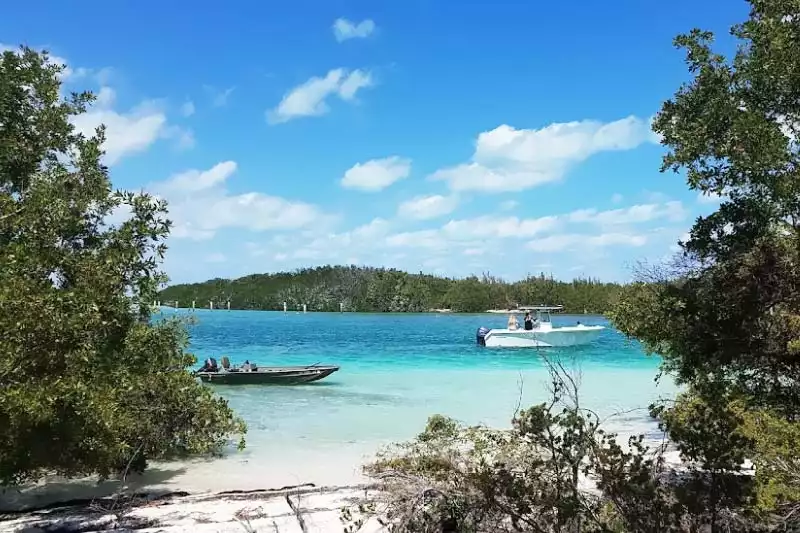
How to Get to Biscayne National Park?
The park is located at the south of Miami, Florida, just near the city of Miami. The park can only be reached by boat. The island and the national park have no connection with the land.
If you have your own boat, you can reach the islands by following the necessary procedures. To reach the islands as a tourist, you need to apply to the Dante Fascell Visitor Center in Miami.
Visiting the park is a must-do for those who love the outdoors and want to explore all that Miami has to offer. With its stunning turquoise waters, beautiful coral reefs and diverse plant and animal life, the park will provide you with unforgettable hours.
Guided Tours and Boat Rentals
Fancy a guided tour? Biscayne National Park has got some awesome ones lined up for you. One of the top picks is the Island Boat Tour, taking you on a 3-hour adventure to Boca Chita Key or Elliott Key.
With a super knowledgeable guide, you’ll get the lowdown on the park’s history, ecosystems, and all the cool critters living there.
Plus, you’ll have time to explore the island, take a dip, or just chill on the beach. Heads up, though – make sure to book your tour in advance and check the park’s official website or hit up the visitor center to get the latest scoop on tour schedules and prices.
Feel like going at your own speed? Renting a boat is the way to go. There are a bunch of marinas where you can rent boats or kayaks, like Homestead Bayfront Marina or Black Point Marina.
Take your pick from a variety of boats, including motorboats, pontoon boats, and even sailboats, based on your vibe and boating skills. Oh, and don’t forget to bring your boater’s license if you’re planning on renting a motorized boat.
FAQs
Can you swim at Biscayne Bay National Park?
Yes, you can swim at Biscayne Bay National Park. The park offers numerous opportunities for swimming, snorkeling, and diving in its crystal-clear waters. Popular swimming spots include the beaches on Boca Chita Key and Elliott Key.
When is the best time to visit Biscayne Bay?
The best time to visit Biscayne Bay National Park is between November and April when the weather is cooler and drier. During this period, you’ll experience pleasant temperatures and lower humidity, making it more enjoyable for outdoor activities.
What should I bring with me when I visit Biscayne Bay?
When visiting Biscayne Bay National Park, be sure to bring sunscreen, insect repellent, hats, sunglasses, towels, and plenty of water. You should also bring any food and drinks you will need for your visit.
Biscayne National Park entrance fee
There is no entrance fee to visit. However, there may be fees for certain activities, such as camping or participating in guided tours. It’s a good idea to check the park’s official website for the latest information on fees and reservations.
What about Everglades National Park?
The park is often overshadowed by its more famous neighbor to the south, Everglades National Park. But Biscayne is a unique and beautiful national park in its own right and well worth a visit.
If you are planning a multi-day itinerary, you can also include Everglades National Park, located in the south of Florida, west of Miami.
Conclusion
In conclusion, this place is a true gem that offers a little something for everyone. Whether you’re looking to relax on pristine beaches, take a guided tour to learn more about the park’s history and wildlife, or chart your own course by renting a boat, this remarkable destination has got you covered.
So pack your bags, gather your friends or family, and get ready to make memories that’ll last a lifetime as you explore the breathtaking beauty and rich biodiversity of Biscayne National Park. Trust us, it’s an adventure you won’t want to miss!

